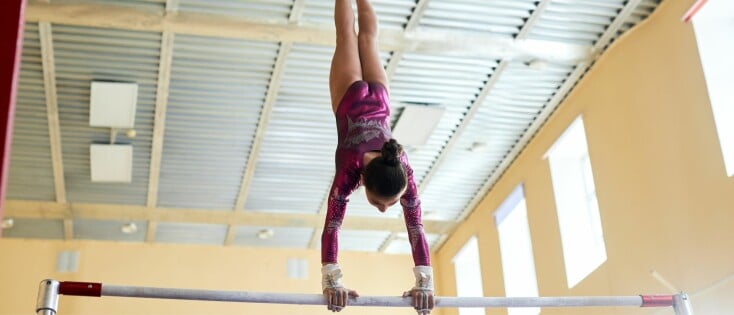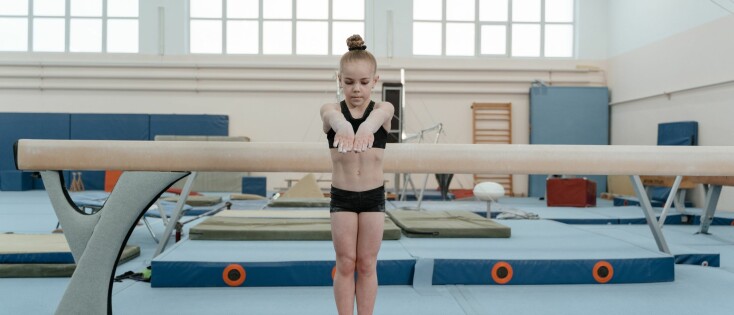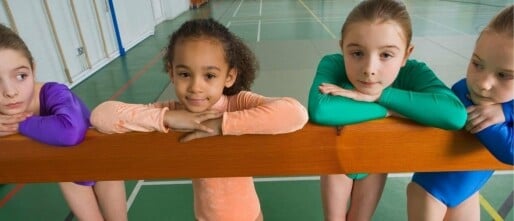You’re cycling home after your training session, going over everything in your mind. One particular apparatus didn’t go as planned. You had prepared various exercises and were eager to implement them. However, half of them turned out to be too difficult for the group. You had misjudged their level—it was lower than you had anticipated.
You could simply brush it off and think, “Oh well, some lessons are just like that.” But reflecting on what went wrong is actually beneficial. What exactly didn’t go as planned? Were you able to adjust in the moment, or did you feel completely lost? Did the children notice? Or did they just continue as usual? These are all questions worth considering. Reflection isn’t negative; in fact, it helps you improve as a coach.
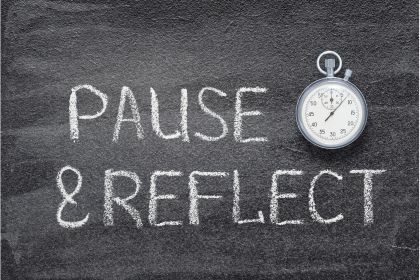
What makes a lesson a good lesson?
For me, a good lesson strikes the right balance between structure and flexibility. It’s important to have clear goals in mind beforehand but also to adapt to the dynamics of the group. In gymnastics training, I need to combine both technical skills and enjoyment.
A good lesson isn’t just about children learning new skills—it’s also about them having fun. You can see this in their energy, enthusiasm, and engagement. When I notice that children are actively participating, eager to try the next exercise, or even experimenting on their own, I know I’m on the right track.
Variety in exercises
Ensuring enough variety in exercises is crucial. Children have different learning styles, so I mix things up: from individual drills to group games, and from technical exercises to moments of relaxation. This keeps their attention and allows each child to learn in their own way.
Engaging the children
A key indicator of a successful lesson is the level of engagement. It’s easy to see when children are truly focused. Their eyes light up when they learn something new or successfully complete an exercise they previously struggled with. This shows not only their understanding of the movement but also their enjoyment in the process.
I also pay attention to body language. When children challenge themselves—making small adjustments and pushing past their limits without giving up—I know I’m providing the right level of challenge. Creating a safe environment where they aren’t afraid to make mistakes is essential. It builds their confidence and encourages further development.
The role of the coach
Children often look to their coach for confirmation or extra guidance. When they ask questions or want to refine their movements, it shows they are genuinely interested and engaged in their learning process.
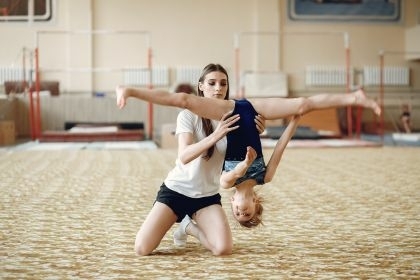
Balancing challenge and success
In my lessons, I always strive to balance challenge and success. Too much challenge can lead to frustration, while too little can cause boredom. When introducing an exercise, I ensure it’s difficult but achievable. I want the children to feel slightly uncomfortable but never discouraged.
For example, when teaching a cartwheel, they might initially struggle with foot placement. However, with support and positive feedback, they often improve quickly. That moment when they finally master the skill is rewarding for both them and me—it gives them a sense of accomplishment and builds their confidence, motivating them to keep progressing.
Another way I manage challenges is by offering different levels of difficulty. Instead of assigning the same exercise to everyone, I provide easier and harder variations. This ensures that every child, regardless of their level, feels challenged but not overwhelmed. It’s inspiring to see them gradually increase their skill level and master new techniques.
Learning from difficult moments
Not every lesson goes as planned. Sometimes an exercise doesn’t work, or the group’s skill level is different than expected. These moments can be frustrating, but they also provide valuable learning opportunities—for both the children and myself.
For instance, during one lesson, I realized that a particular skill (such as a somersault) was too difficult for some children. They became frustrated and started withdrawing. I quickly adapted the exercise by breaking it down into simpler steps. Instead of immediately attempting the somersault, we focused on preparatory movements that built their confidence. The result was fantastic—after this adjustment, they engaged enthusiastically and made noticeable progress.
This experience taught me the importance of flexibility. If something isn’t working, I need to be willing to modify the approach. It’s okay to simplify an exercise; the goal is always to help children develop skills at their own pace.

The interaction between coach and children
As a coach, I strive to build a personal connection with the children so they feel seen and heard. This isn’t just important for motivation but also for creating a safe learning environment. When a child feels comfortable, they are more likely to take risks, make mistakes, and try again—an essential part of their development.
I ensure that I provide not only technical instruction but also moments of positive feedback. When I see children improving, I let them know and praise their effort. At the same time, I respond constructively when they struggle. This helps them feel comfortable making mistakes because they understand that errors are a natural part of the learning process.
My own growth as a coach: what have I learned?
Reflecting on my own teaching is just as important as evaluating the children’s progress. Every lesson provides new insights and opportunities to improve my approach. For example, I’ve learned to be more patient and to recognize when a child needs extra support. Sometimes, the problem isn’t that an exercise is too difficult—it’s that the child lacks confidence.
By regularly reviewing my lessons, I can refine my methods and techniques. I identify what works well and where I can be more effective. It’s important not only to focus on the children’s growth but also to continually develop as a coach.
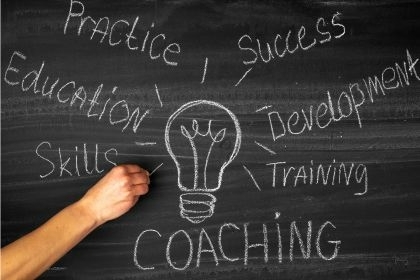
Conclusion: learning, growing, and having fun
For me, a good gymnastics lesson is about more than just technique—it’s about creating an environment where children feel safe, have fun, and grow. Reflecting on my lessons helps me understand what’s working and where improvements can be made. As a coach, I need to be flexible and patient, but most importantly, I need to enjoy the process of guiding children. Ultimately, it’s all about the joy of the sport and the small victories children achieve—both in their physical skills and in their confidence.



